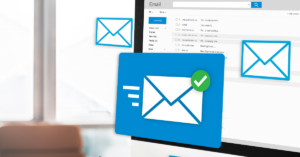In general, marketing is the process of communicating the price of a product or service to a broad audience with the goal of converting them into paying customers in the future. When this process is conducted through digital platforms, it is known as digital marketing. This approach can involve a combination of both push and pull marketing strategies.
The History of Digital Marketing
Digital marketing emerged in the 1990s alongside the rise of the internet and Web 1.0, which allowed users to access information but not share it. Initially, marketers were uncertain about its potential. The first clickable banner ad appeared in 1993, marking the shift toward digital advertising. By 1994, Yahoo launched, triggering a wave of website optimization for search rankings.
The late 1990s saw the rise of major search engines—Google was founded in 1998, Microsoft launched MSN Search, and Yahoo introduced Yahoo Web Search. The early 2000s witnessed explosive growth in search traffic, with Microsoft introducing Live Search to compete. The advent of Web 2.0 allowed users to engage online actively, increasing digital marketing channels. By 2004, internet advertising in the U.S. alone reached $2.9 billion.
Social media transformed the landscape with MySpace and Facebook leading the way. Businesses seized the opportunity to market their brands through these platforms. The introduction of cookies enabled advertisers to track user behavior and personalize marketing efforts.
Today, digital marketing is an integral part of business strategy. Social media dominates, with 99% of digital marketers using Facebook, followed by Twitter (97%), Pinterest (69%), and Instagram (59%). Platforms like LinkedIn, Twitter, and Facebook remain the top choices for marketers, shaping the digital marketing industry as we know it.
The Evolution of Digital Marketing: A Timeline
The 1990s: The Dawn of Digital Marketing
The term digital marketing first emerged in the 1990s with the advent of the internet and Web 1.0. This early web era enabled users to search for information but lacked interactive capabilities. Marketers were initially skeptical, unsure of its potential impact. However, in 1993, the first clickable banner ad went live, marking the beginning of digital advertising. The launch of Yahoo in 1994 revolutionized search, prompting businesses to optimize their websites to improve rankings. By the late 1990s, search engines such as HotBot, LookSmart, and Alexa entered the market, culminating in Google’s launch in 1998, alongside Microsoft’s MSN Search and Yahoo’s Web Search.
The Early 2000s: The Digital Boom
As digital adoption surged, search traffic soared. In 2006, global search engine traffic hit 6.4 billion searches per month. Recognizing this shift, Microsoft retired MSN Search and introduced Live Search to compete with Google and Yahoo. The emergence of Web 2.0 transformed users from passive consumers to active participants, fostering greater interaction between consumers and businesses. By 2004, digital advertising in the U.S. had already generated $2.9 billion in revenue.
The Rise of Social Media
The early 2000s saw the launch of MySpace, followed closely by Facebook. Social networking sites opened new doors for businesses, providing fresh opportunities to engage with consumers. The ability to target audiences through personalized marketing strategies led to a shift in digital marketing tactics.
The Mobile Revolution
The latter half of the decade witnessed the rapid expansion of mobile technology, with Amazon’s e-commerce sales surpassing $10 billion. The rise of smartphones and social media apps like WhatsApp, Instagram, and Snapchat reshaped how businesses reached consumers. Mobile marketing became a dominant force, further propelling digital advertising.
The 5 Ds of Digital Marketing
Digital marketing revolves around five key elements that shape modern marketing strategies. These are collectively known as the 5 Ds of Digital Marketing:
1. Digital Devices
Digital devices are the everyday tools people use to interact with online content. These include smartphones, tablets, laptops, desktop computers, smart TVs, and even wearable tech. Marketers leverage these devices to reach and engage specific audiences through targeted campaigns.
2. Digital Content Platforms
These platforms serve as the primary channels where users interact with digital content. Social media sites, search engines, websites, and streaming services are all examples. Businesses use these platforms to share advertisements, promote products, and engage with their audience.
3. Digital Media
Digital media includes the different channels used to communicate marketing messages. These can be paid (such as online ads and sponsored content), owned (like company websites and email newsletters), or earned (user-generated content and organic shares). A strategic mix of these channels helps brands maximize reach and engagement.
4. Digital Data
Digital data refers to the information collected about consumers to refine marketing strategies. This data gathered through website analytics, customer interactions, surveys, and apps helps businesses understand customer behavior, preferences, and trends to create personalized experiences.
5. Digital Technology
Digital technology enhances marketing efforts by leveraging innovation to improve user experience and engagement. AI-powered chatbots, augmented reality (AR) filters, virtual reality (VR) experiences, and automation tools all fall under this category, enabling businesses to connect with audiences in new and immersive ways.
Together, these five elements form the foundation of digital marketing, helping businesses create effective, data-driven strategies to engage and convert their target audiences.
Types of Digital Marketing
1. Content Marketing
Creating and sharing valuable content (blogs, videos, infographics) to attract and engage a target audience.
2. Search Engine Optimization (SEO)
Optimizing websites to rank higher on search engines and drive organic traffic.
3. Search Engine Marketing (SEM)
Using paid (PPC) and organic strategies to increase visibility in search results.
4. Social Media Marketing (SMM)
Promoting brands on social platforms like Facebook, Instagram, and LinkedIn to drive engagement and conversions.
5. Affiliate Marketing
Partnering with affiliates (influencers, bloggers) who promote products for a commission on sales.
6. Email Marketing
Using personalized emails to nurture leads, retain customers, and boost conversions.
7. Instant Messaging Marketing
Engaging customers via WhatsApp, Messenger, or chatbots for instant support and promotions.
8. Audio Experience Optimization (AEO)
Optimizing digital content for voice search and audio platforms like podcasts and smart assistants to enhance discoverability and user experience.
The Present and Future of Digital Marketing
Today, 65% of all digital media consumption happens on mobile devices. The digital advertising industry is valued at approximately $200 billion, with Google AdWords accounting for 96% of Google’s revenue. Social networking has led the digital marketing revolution, with 3.1 billion active users globally. The rise of influencer marketing has created a billion-dollar industry, one that continues to grow exponentially.
As digital marketing evolves, emerging technologies and shifting consumer behaviors will continue to redefine strategies. With innovation at its core, the future of digital marketing promises new opportunities and unprecedented growth in this ever-expanding landscape.






